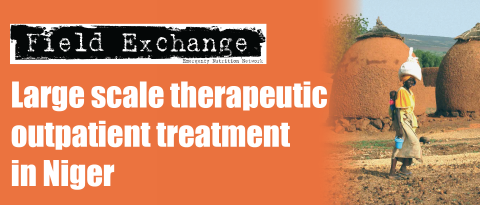Revisiting ‘new variant famine’ in southern Africa
Summary of published research1
The 'New Variant Famine' hypothesis was first published in 2003. It postulated four factors contributing to worsening food shortages in southern Africa and limiting recovery;
- household level labour shortages due to adult morbidity and mortality, and the related increase in numbers of dependants
- loss of assets and skills due to adult mortality
- the burden of care for sick adults and children orphaned by AIDS, and
- the vicious interactions between mal nutrition and HIV.
A paper just published in Humanitarian Exchange draws on recent published research and two recent studies in Malawi and Swaziland to reassess the new variant famine hypothesis.
Both Malawi and Swaziland are predominantly agricultural, poor and vulnerable and are suffering high prevalence epidemics of AIDS. In both countries, farming is labourintensive, reliant primarily on hoe-cultivated maize in a single farming season and food crisis, including chronic malnutrition and recurrent famine, is common to many parts of Malawi and Swaziland. Both countries also face a severe HIV/AIDS epidemic. Adult prevalence of HIV/AIDS among ante-natal clinic (ANC) attendees in Swaziland - 42.6% - is the highest in the world. In Malawi, prevalence among ANC attendees is 14.4%. Mortality in Swaziland has almost tripled over the past ten years, from about eight deaths per 1,000 in 1994 to about 23/1,000 in 2004. Adult mortality has also risen sharply in Malawi. In both countries, these increases are almost entirely due to AIDS.
HIV/AIDS and loss of household labour, assets and skills
Results of household studies in both countries during the 2002-3 crisis clearly show that HIV/AIDS was one cause of declining agricultural production. Evidence from Swaziland found a reduction in maize production of 54.2% in households with an AIDS-related death. In Malawi, households without an 'active adult' suffered a 26% drop in tuber production, a 53% fall in cereal production and a 51% reduction in cash crop income compared to households with at least one 'active adult'. There is also an important gender dimension to this impact. In Malawi, in households with a recent adult male death, the area planted is 32% lower than in households with a recent adult female death.
HIV/AIDS and rural livelihood coping strategies
A survey of HIV affected households in Malawi found that three quarters of households changed their usual crop mix towards less labour-intensive crops in response to labour shortages and lack of resources. In contrast, in Swaziland decreasing the area under cultivation was a common response. According to one study, the area under cultivation decreased by an average of 51% in households with an AIDSrelated death, compared with 15.8% for households with a death that was not AIDS-related.
In Malawi, one household study found that some 40% of those affected by chronic illness sold a portion of their assets to buy food or to pay medical or funeral expenses. In Swaziland, households with an AIDS death experienced a 29.6% reduction in the number of cattle they owned.
HIV/AIDS and changing dependency patterns
In 2003, UNAIDS estimated that about 500,000 children (about 50% of the total number of orphans) in Malawi and 65,000 children (65% of total orphans) in Swaziland below 17 years of age had lost one or both parents to AIDS. Caring for an increasingly large number of orphans is placing a tremendous burden on extended families and community networks. At the same time, kinship networks have proven resilient in providing at least a minimum level of care and socialisation for children orphaned by AIDS.
HIV/AIDS and malnutrition
Overviews of nutritional surveys during the 2002-3 drought found clear signs that double orphans have a much higher prevalence of malnutrition compared with children with one or both parents living. It also found that, although child malnutrition rates were higher in rural areas (which tended to have lower HIV prevalence), the decline in nutritional status was most marked closer to towns (which have higher prevalence of HIV/AIDS than rural areas). There is also preliminary evidence that the rebound in nutritional status after the end of the drought in 2003 was less robust than expected.
Other aspects of the relationship between malnutrition and the HIV/AIDS epidemic remain speculative and under-researched. Little is known about the indirect impacts of the HIV/AIDS epidemic on the spread of childhood infectious diseases, and studies of adult nutrition and HIV infectivity and virulence are complex, contradictory and/or inconclusive.
In conclusion, the authors state that recent research supports the view that AIDS is challenging rural livelihoods, undermining resilience to other shocks and stresses and creating new patterns of malnutrition. It is also argued that in many areas of southern and eastern Africa, each turn of the cultivating seasons is seeing a small, significant and usually negative change in rural livelihoods. While communities are resourceful and inventive in responding to the stresses they face, a significant proportion of the rural population is being ground down into chronic destitution. According to the authors, this is preventable but it is not being stopped and until it is, we face the prospect of major, ongoing interventions to support social welfare in affected communities.
1Runde. D (2006). How to make development partnerships work. OECD Observer, No 255, May 2006, pp 35-37
Imported from FEX website


